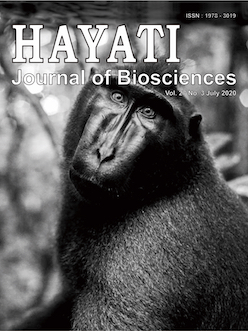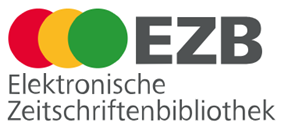Impact of Methanotrophic and N2O-reducing Bacterial Inoculation on CH4 and N2O Emissions, Paddy Growth and Bacterial Community Structure in Paddy Field
Abstract
Paddy field is one of the anthropogenic sources that produce greenhouse gases emission. This study aimed to investigate the impact of methanotrophic and N2O-reducing bacterial inoculation on CH4 and N2O emissions, paddy growth and bacterial community structure in paddy field. Two treatments of 100% synthetic fertilizer (250 kg urea/ha) without biofertilizer and 50% synthetic fertilizer (125 kg urea/ha) with biofertilizer consisted of methanotrophic and N2O-reducing bacteria were applied in the paddy field. Inoculation of methanotrophic and N2O-reducing bacteria was able to reduce CH4 and N2O emission up to 4.19 mg CH4/m2/day and 351.29 µg N2O/m2/day, respectively. Those bacterial applications were also able to increase paddy growth and yield productivity. According to DGGE profile, inoculation of the biofertilizer seemed to have a transient impact on bacterial communities in paddy soil at 36 days after transplanting (DAT) which showed the lowest similarity with all samples (a similarity index of 0.68). DGGE bands successfully excised have closest relative to uncultured bacteria which comprised 5 phyla, i.e. Proteobacteria (Alphaproteobacteria and Deltaproteobacteria), Nitrospirae, Actinobacteria, Firmicutes, and Acidobacteria. In this study, Alphaproteobacteria was the most dominant phylum. We provide basic information for developing the biofertilizer which supports sustainable agriculture.
Downloads
HAYATI J Biosci is an open access journal and the article's license is CC-BY-NC. This license lets others distribute, remix, tweak, and build upon author's work, as long as they credit the original creation. Authors retain copyright and grant the journal/publisher non exclusive publishing rights with the work simultaneously licensed under a https://creativecommons.org/


















.png) IPB University
IPB University Department of Biology
Department of Biology The Indonesian Biological Society
The Indonesian Biological Society 

